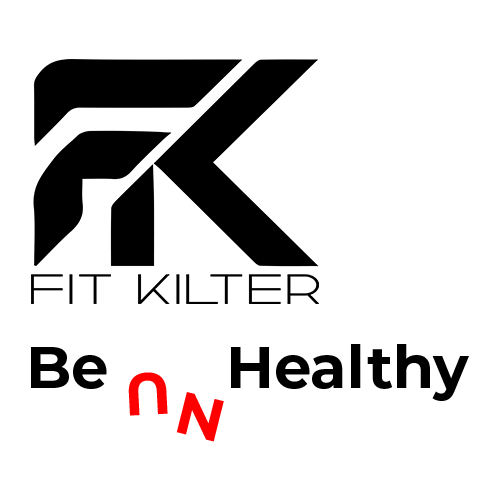When it comes to exercise, there’s often a debate between cardio and strength training – which is better for achieving your fitness goals? The truth is, both forms of exercise offer unique benefits and play complementary roles in a well-rounded fitness routine. In this comprehensive blog, we’ll explore the differences between cardio and strength training, the benefits of each, and how to find the right balance to maximize your fitness results.
Understanding Cardiovascular Exercise and Strength Training:
Cardiovascular Exercise:
- Cardiovascular exercise, often referred to as cardio, refers to activities that elevate your heart rate and improve cardiovascular fitness. Examples of cardio exercises include running, cycling, swimming, brisk walking, and dancing. Cardio workouts primarily focus on improving endurance, burning calories, and enhancing cardiovascular health.
Strength Training:
- Strength training, also known as resistance training or weightlifting, involves using resistance, such as free weights, resistance bands, or bodyweight exercises, to build muscular strength, endurance, and hypertrophy (muscle growth). Strength training exercises target specific muscle groups and can include exercises like squats, deadlifts, lunges, push-ups, and bicep curls.
Benefits of Cardiovascular Exercise:
- Improved Cardiovascular Health: Cardio exercises strengthen the heart and lungs, improving circulation and oxygen delivery throughout the body. Regular cardio can reduce the risk of heart disease, stroke, and other cardiovascular conditions.
- Weight Loss and Fat Burning: Cardio workouts are effective for burning calories and promoting weight loss, making them a valuable component of any weight management plan. High-intensity cardio, such as HIIT (High-Intensity Interval Training), can also boost metabolism and increase fat burning even after the workout ends.
- Enhanced Endurance and Stamina: Cardiovascular exercise improves aerobic capacity and endurance, allowing you to perform everyday activities with less fatigue and greater efficiency. Whether it’s climbing stairs, chasing after your kids, or hiking up a steep trail, improved endurance can enhance your overall quality of life.
Benefits of Strength Training:
- Increased Muscle Strength and Tone: Strength training builds muscle strength and definition, enhancing your physical performance and functional capacity. Strong muscles support proper posture, balance, and joint stability, reducing the risk of injuries and age-related muscle loss.
- Boosted Metabolism: Muscle tissue is metabolically active, meaning it burns more calories at rest compared to fat tissue. By increasing lean muscle mass through strength training, you can boost your basal metabolic rate (BMR), leading to increased calorie expenditure and improved weight management.
- Bone Health and Joint Support: Strength training helps maintain bone density and reduce the risk of osteoporosis and bone fractures, especially important as we age. Additionally, strengthening the muscles around joints can alleviate joint pain and improve mobility, enhancing overall joint health and function.
Finding the Right Balance:
While both cardio and strength training offer numerous benefits, the key to optimizing your fitness routine lies in finding the right balance between the two. Here are some tips for striking the perfect balance:
- Prioritize Variety: Incorporate a mix of cardio and strength training exercises into your weekly routine to target different muscle groups and energy systems. This variety not only keeps workouts interesting but also ensures comprehensive fitness development.
- Set Clear Goals: Determine your fitness goals and tailor your workout routine accordingly. If your goal is primarily weight loss, prioritize cardio exercises that elevate your heart rate and burn calories. If you’re aiming to build muscle and strength, focus on resistance training exercises that challenge your muscles.
- Listen to Your Body: Pay attention to how your body responds to different types of exercise and adjust your routine accordingly. If you’re feeling fatigued or overworked, consider incorporating more rest days or switching to lower-intensity workouts to allow for adequate recovery.
- Incorporate Cross-Training: Cross-training involves participating in a variety of activities, including cardio, strength training, flexibility, and mobility exercises. Cross-training not only prevents boredom but also reduces the risk of overuse injuries and promotes overall fitness and athleticism.
- Be Consistent: Consistency is key to seeing results from your fitness routine. Aim to exercise regularly, incorporating both cardio and strength training workouts into your weekly schedule. Whether it’s hitting the gym, going for a run, or doing a home workout, make exercise a non-negotiable part of your routine.
Conclusion:
Cardiovascular exercise and strength training each offer unique benefits for improving fitness, enhancing health, and achieving your wellness goals. By finding the right balance between cardio and strength training, you can optimize your fitness routine, maximize your results, and enjoy a well-rounded approach to health and wellness. Whether you’re looking to burn calories, build muscle, or improve overall fitness, incorporating both forms of exercise into your routine will help you achieve a strong, healthy, and resilient body for years to come.













